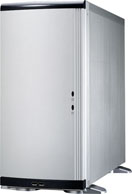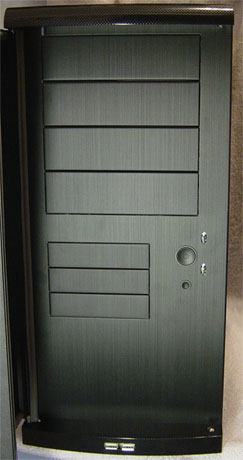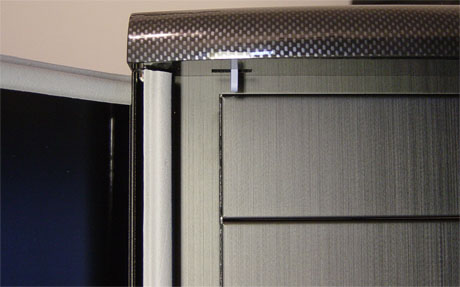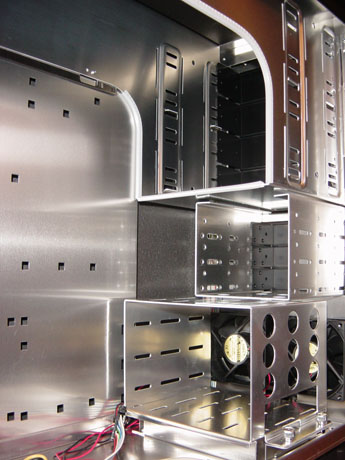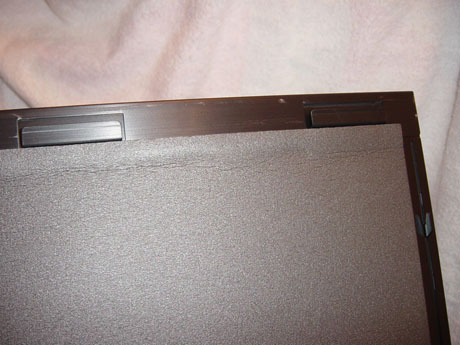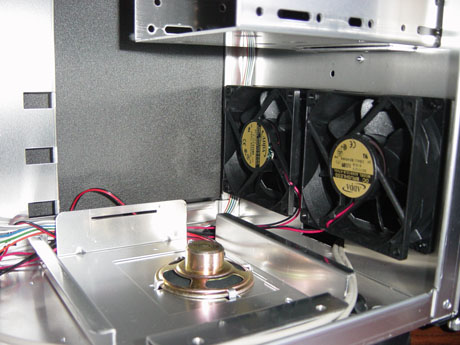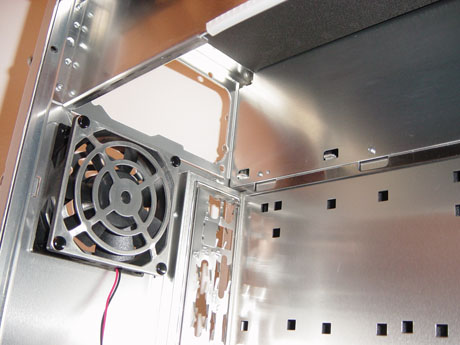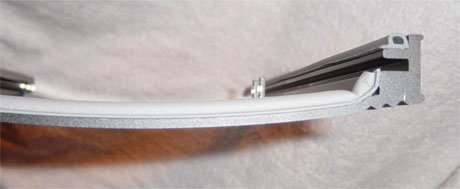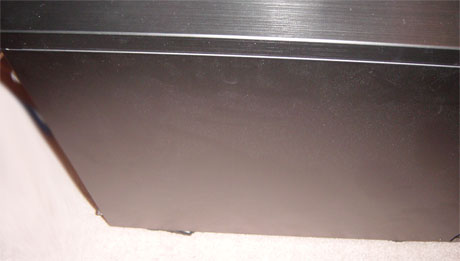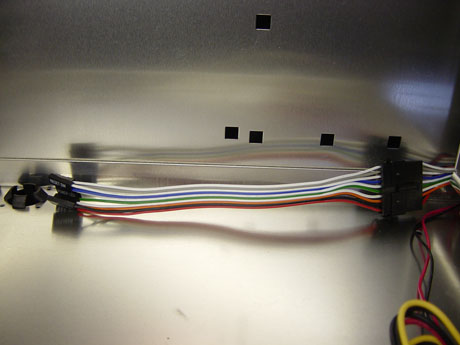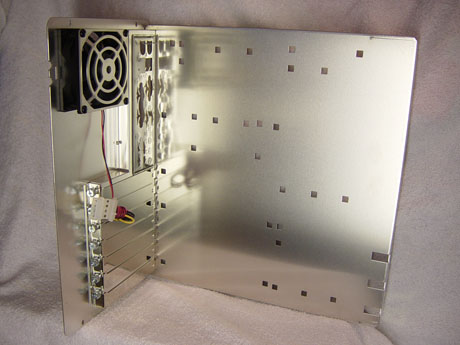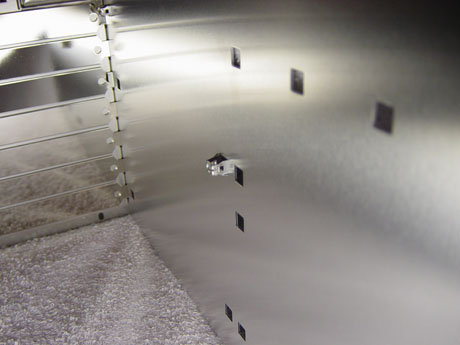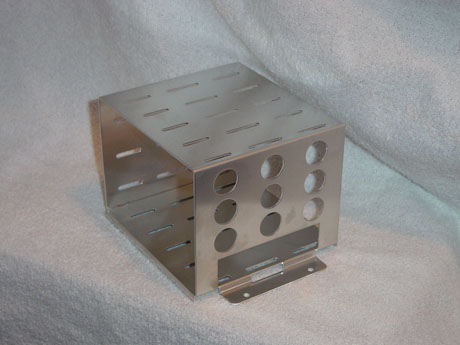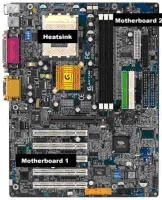
Original Link: https://www.anandtech.com/show/1278
Lian Li's PC-6070 Aluminum Case
by Purav Sanghani on March 25, 2004 10:27 PM EST- Posted in
- Cases/Cooling/PSUs
Lian Li is one of the world's leading designers in aluminum computer cases. Since 1983, Lian Li Industrial Corporation has been manufacturing aluminum chassis and rackmounts. As soon as they saw a market for desktop and server cases, they moved in for the kill.
Lian Li's years of experience in aluminum has given them the knowledge and skills that they need to design and manufacture innovative products that perform better than many other cases at their level.
The PC-6070 is no different than any other model in their line of desktop cases. It has many of the same features as the others in its class, but with a few more additions to create a sense of uniqueness. Take a look at how it compares to the rest, as we open it up and put it to the test.
More information on the PC-6070 is available at Lian Li's website.
Special thanks to Hampton Technologies for providing us with the Lian Li PC-6070 for this review.
Design
Lian Li has been known for its unique designs in their entire product line. The PC-6070 is based on its PC-6 series counterparts. Though not completely screw-less, it emphasizes removable components. Everything from the motherboard tray to the drive bays are all held in place by thumbscrews, which can be removed for installation of hardware.The exposed drive bays as well as the bright power and HDD LEDs are hidden behind a full height aluminum door. The power button is easy to press and is concaved to prevent accidental brushes with disaster. The reset button is a bit small for any normal adult finger, but its size also prevents it from being accidentally pushed. The LEDs are directed through to the front of the door by way of a plastic insert.
The door can be removed by pushing the release clip to the left for those who access the drives often.
The entire front end of the chassis is composed of drive bays. There are four 5-1/4" bays at the top, three 3-1/2" bays at mid-height, and a carriage that can hold up to five more 3-1/2" drives, which sits at the bottom. This carriage sits elevated above the PC speaker and is kept in place by 2 thumbscrews.
The PC-6070 has a compact design that is ideal for desktop use. Unlike the SilverStone Nimitz that we reviewed last week, it has a small footprint for being such a feature-packed model.
Many case designers overlook the fact that noise levels can affect the attractiveness of the final product. Lian Li takes measures to ensure a quiet case by adding 2mm thick foam insulation on both side panels as well as the ceiling of the chassis. They have also lined the inside of the door with foam strips and also lined the insides of the drive bay openings to further reduce any noise from seeping through.
Case Fans
The PC-6070 includes three 80mm fans of its own. Two are mounted at the front of the case directly in front of the drive carriage. These fans serve as intakes and blow outside air directly at the 3-1/2" drive bay carriage to cool installed hard drives. A second option would have been a larger 120mm fan, which would further reduce noise levels. Air is pulled in via a removable vent at the bottom of the case, directly in front of the first pair of stands. A reusable filter is also included.The third fan is mounted at the rear directly below the PSU opening. This single fan serves as the one and only exhaust for the PC-6070. We noticed that in many other cases, two fans are used to exhaust warm air out of the rear. This imbalance could cause increased temperatures of components, lowering the overall performance. And since there are no other openings on the chassis, additional fans cannot be installed.
The power connectors are standard 4-pin leads with pass-through female leads. This allows the fans to be daisy-chained to other components as well as themselves.
Construction
The PC-6070 is an all aluminum chassis, with the exception of its plastic fans and retractable feet. As mentioned before, Lian Li is well known for its aluminum products and they know how to use the metal alloy. The material is strong and can withstand the normal day-to-day uses. Though bending can occur with many aluminum cases, the PC-6070 uses 1.0mm thick aluminum throughout, making it extremely durable.The front door is made of thicker 2.0mm aluminum and protects against accidental kicks or other potential damage to the drives behind it. It is curved slightly outwards to give the face a simple, yet modern, look. The door is lined with rubber surrounds to reduce noise levels.
The side panels are the traditional type with no windows or fans mounted on them. They are black brushed aluminum to match the rest of the shell and are held on by two thumbscrews. The panels are slightly difficult to remove. There are no indentations on them, like the Thermaltake Xaser Skull had, to get a good grip to slide the panels back.
The PC-6070's one security feature is the rear side loop, which, when in use, locks the left side panel and the motherboard to the chassis. This does not prevent someone from accessing though. The right panel does not have a lock and can be removed. Other features like front panel key locks as well as electronic intrusion systems would have made great additions for security.
Expansion
The PC-6070's main selling point is the ability to expand. As we said before, this model has many options for drive additions, with its four 5-1/4" and up to eight 3-1/2" drive bays, making the PC-6070 an ideal solution for typical desktop systems to small file servers.There are also 7 add-on card openings, which use thumbscrews to hold the cards in place.
USB ports at the front of cases have become a standard in all new computers. The 2 ports placed below the door on the footer bezel are easy to connect to the motherboard. The internal wires have both the single plug connector as well as separated connectors for motherboards with non-standard USB connections. The lack of audio and firewire ports, however, is what makes this case less attractive for those who use them often (LAN partyists/gamers).
The front panel connector is also well designed on the PC-6070. The bundle of wires for the power/reset buttons, LEDs, and PC speaker can be disconnected from a single lead to allow the removal of the motherboard tray without unplugging them from the board. This time-saving feature is also becoming a standard in quality cases.
Motherboard Tray
The motherboard tray is designed to allow the removal of an installed system board along with the add-on cards plugged into it. This one piece design saves time and is being seen in more and more new cases, like the Kingwin KT-436 that we reviewed back in November 2002.To install a motherboard, the included "mounting nut" need to be pushed in from the backside of the tray in the many square cut outs. Though installations of these nuts are tedious, they seldom need to be removed if working with motherboards of the same form factor. The motherboard can then be screwed into place using the motherboard screws provided. There are more than enough cut outs to allow a variety of form factors to be used. We thought Thermaltake's method of using screw-less stand-offs saved a great amount of time during installation of the motherboard; just something for Lian Li to think about for future designs.
Installation
Installation of all the necessary components ate up about 20 minutes for the PC-6070. The biggest time consumer was because of the design of the drive bays as well as the motherboard. Drive rails and sliding clips are beginning to be standardized on many newer cases, yet Lian Li chose not to go with a completely screw-less design. One reason why this may be for the drive mounts is safety. Hard drives need to be mounted securely in order to work efficiently; otherwise, they may become damaged.Add-on cards used thumbscrews, which saved some time in that area. It is a step forward from the traditional Philips head screws, but again, screw-less designs are dominating the industry.
The power supply installed flawlessly using screws from the back. One thing to keep in mind is while using a large CPU heatsink, the motherboard tray may need to be removed to install a power supply easily; otherwise, it is almost impossible to get a unit inside.
Benchmarking
When benchmarking the PC-6070, we test the temperatures of key components, including the actual CPU temperature, the actual temperature inside the heatsink, the temperatures of the DDR, Northbridge, Southbridge, HDD, PSU, and the amibient temperature inside the case, all during normal operation.Gigabyte GA-7VRX |
|
The thermal readings for the key components and points on the motherboard during operation were as follows:
| Lian Li PC-6070 | ||||||||
| System On-Time | CPU | Heatsink | HDD | DDR | Northbridge | Southbridge | Power Supply | System Ambient |
| 10 | 52.5 | 36.8 | 26.2 | 35.3 | 39.9 | 39.7 | 29.4 | 30.2 |
| 30 | 53.8 | 37.7 | 26.9 | 39.5 | 41.6 | 40.2 | 31.6 | 33.4 |
| SilverStone SST-TJ03 | ||||||||
| System On-Time | CPU | Heatsink | HDD | DDR | Northbridge | Southbridge | Power Supply | System Ambient |
| 10 | 51.2 | 35.4 | 26.9 | 33.2 | 38.2 | 38.1 | 29.1 | 28.5 |
| 30 | 52.6 | 36.8 | 27.4 | 35.5 | 39.5 | 38.5 | 31.2 | 30.1 |
| Kingwin KT-436-WM | ||||||||
| System On-Time | CPU | Heatsink | HDD | DDR | Northbridge | Southbridge | Power Supply | System Ambient |
| 10 | 54.0 | 38.0 | 27.2 | - | 25.0 | 28.5 | - | - |
| 30 | 54.5 | 38.9 | 27.4 | - | 26.1 | 29.0 | - | - |
The temperatures for the key components are higher than those of the SilverStone TJ03 that we tested last week. This is most likely due to inefficient air circulation. The TJ03 had three 80mm exhaust fans and one 120mm intake. The PC-6070, on the other hand, has only one 80mm exhaust fan and two 80mm intakes. The temperatures are about 1-2 degrees higher than those for the TJ03. The only component that resulted in a slightly lower temperature was the HDD. The two 80mm intakes pushed air directly at the drive.
Compared to cases that we have reviewd in the past, we predicted the Lian Li to be much quieter in our noise benchmark. We measure the noise level of the PC-6070 12" away from the closed chassis with the power supply fan turned off. Take a look at our results.
| Case | dBA |
| Lian Li PC-6070 | 44 |
| SilverStone Nimiz Temjin III | 53 |
| Kingwin KT-424 Aluminum | 48 |
| Thermaltake Xaser III Aluminum Fan Low | 52 |
| Cooler Master ATC-201A Aluminum | 53 |
The PC-6070 was, on average, about 10dBA quieter than the others we have tested. The 2mm thick foam insulation dampened the internal noise from the case fans very well. The low noise levels could have been due to there being only three 80mm fans, but we could barely hear the loud fan from the Volcano heat sink.
Final Thought
The PC-6070 proves to be yet another great product from the designers at Lian Li. Its few shortcomings, like the lack of a screw-less design and only one exhaust fan, are matched by the plethora of features, such as the removable motherboard tray and plenty of drive mounting space.The temperature readings showed the PC-6070 to perform at the average level, though an additional exhaust fan could have helped the system keep temperatures of many components cooler. We were surprised at how much lower the noise level was compared to the other 4 cases. The foam insulation resulted in noise levels about 10 dBA lower on average, making this a real quiet case.
In the end, the price tag fits the look and performance of this Lian Li creation well. With slight improvements, the PC-6070 could be one of the top cases in its class in the market.
Special thanks to Hampton Technologies for providing us with the Lian Li PC-6070 for this review.

